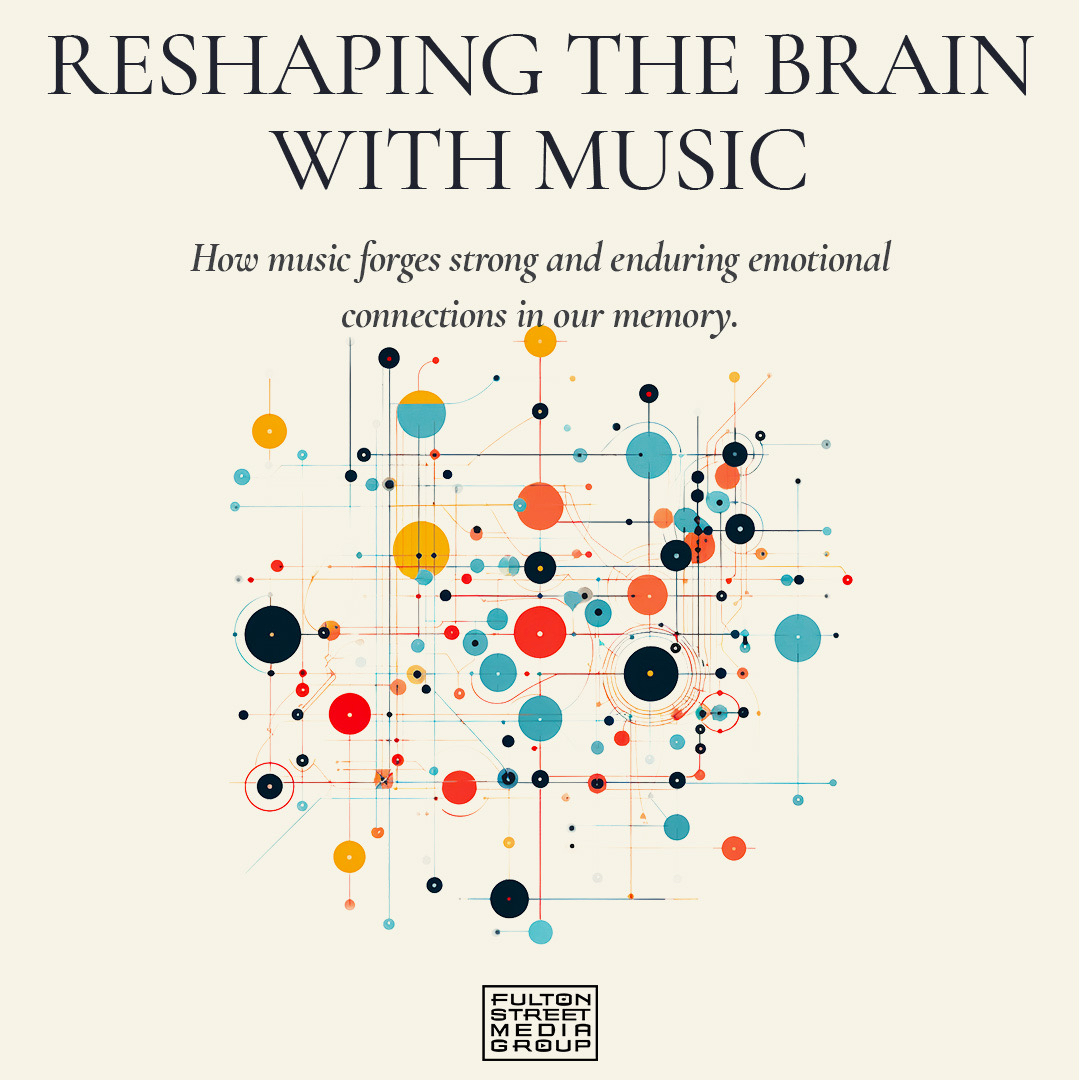Reshaping the Brain with Music

We can all provide vivid anecdotes for the times when music has shaped a memory in our lives. It’s that dopamine rush of hearing your favorite song for the first time, or that nostalgic feeling when a melody transports you to a place and time where you made a deep connection with someone.
In our day-to-day lives, music is an elegant tool for generating and regulating emotions.
Whether to relax, jumpstart a workout, set the mood for a romantic evening, or engender a sense of belonging with total strangers, this unique power of music is a visceral part of our human experience.
More Than Meets The Ear.
Music’s ability to get our attention and capture our imagination goes far beyond just what we hear. Listening to music, or even the passive participation of humming and tapping along can increase connectivity between ordinarily disparate regions of the brain, including those responsible for:
- language processing
- attention and memory
- emotion and mood control
- motor skills
This enhanced connectivity supports cognitive functions, facilitates learning, and aids neuroplasticity, the brain’s ability to reorganize itself by forming new neural connections.
This Song is Dop(amine).
Dopamine is a chemical messenger involved in reward, motor function, and pleasure. Its release strengthens the positive associations between an event and the neural connections involved.
Here’s how the music you love triggers the release of dopamine:
Anticipation and Prediction
Part of the pleasure of listening to music comes from an expectation fulfilled or the pleasant surprise of an unexpected resolution. Our reward circuitry is hinged on both patterns and novelty.
Enter “the drop”!
Everybody Rock Your Body
Infectious harmony and compelling rhythm inspire movement. The synchronicity between body and sound stimulates motor control and reward pathways, leading to dopamine release.
Limbic Listening
Dopamine is a powerful tool of the limbic system, responsible for our emotional responses, behaviors, and long-term memory. Music and our affiliated memories spark positive emotional connections, thus activating the release of dopamine.
Harnessing Music To Commit Brands To Memory.
People buy with their hearts not their heads. So how can the power of music shape the emotional impact a brand has on their customer?
You don’t own your brand, your audience does. So how can music shape the way your brand is remembered by a super-fan?
An intentional and coherent music strategy creates impactful and enduring activations for an audience.
Such a strategy employs what we know about music’s ability to shape memory and align brand ethos with audience values. It does so deliberately and cohesively, with every interaction reinforcing brand position. Just as with a visual aesthetic, repetition of a musical aesthetic unifies audience perception, and generates an identity that is not only memorable, but worth remembering.

Reshaping the Brain with Music

We can all provide vivid anecdotes for the times when music has shaped a memory in our lives. It’s that dopamine rush of hearing your favorite song for the first time, or that nostalgic feeling when a melody transports you to a place and time where you made a deep connection with someone.
In our day-to-day lives, music is an elegant tool for generating and regulating emotions.
Whether to relax, jumpstart a workout, set the mood for a romantic evening, or engender a sense of belonging with total strangers, this unique power of music is a visceral part of our human experience.
More Than Meets The Ear.
Music’s ability to get our attention and capture our imagination goes far beyond just what we hear. Listening to music, or even the passive participation of humming and tapping along can increase connectivity between ordinarily disparate regions of the brain, including those responsible for:
- language processing
- attention and memory
- emotion and mood control
- motor skills
This enhanced connectivity supports cognitive functions, facilitates learning, and aids neuroplasticity, the brain’s ability to reorganize itself by forming new neural connections.
This Song is Dop(amine).
Dopamine is a chemical messenger involved in reward, motor function, and pleasure. Its release strengthens the positive associations between an event and the neural connections involved.
Here’s how the music you love triggers the release of dopamine:
Anticipation and Prediction
Part of the pleasure of listening to music comes from an expectation fulfilled or the pleasant surprise of an unexpected resolution. Our reward circuitry is hinged on both patterns and novelty.
Enter “the drop”!
Everybody Rock Your Body
Infectious harmony and compelling rhythm inspire movement. The synchronicity between body and sound stimulates motor control and reward pathways, leading to dopamine release.
Limbic Listening
Dopamine is a powerful tool of the limbic system, responsible for our emotional responses, behaviors, and long-term memory. Music and our affiliated memories spark positive emotional connections, thus activating the release of dopamine.
Harnessing Music To Commit Brands To Memory.
People buy with their hearts not their heads. So how can the power of music shape the emotional impact a brand has on their customer?
You don’t own your brand, your audience does. So how can music shape the way your brand is remembered by a super-fan?
An intentional and coherent music strategy creates impactful and enduring activations for an audience.
Such a strategy employs what we know about music’s ability to shape memory and align brand ethos with audience values. It does so deliberately and cohesively, with every interaction reinforcing brand position. Just as with a visual aesthetic, repetition of a musical aesthetic unifies audience perception, and generates an identity that is not only memorable, but worth remembering.


